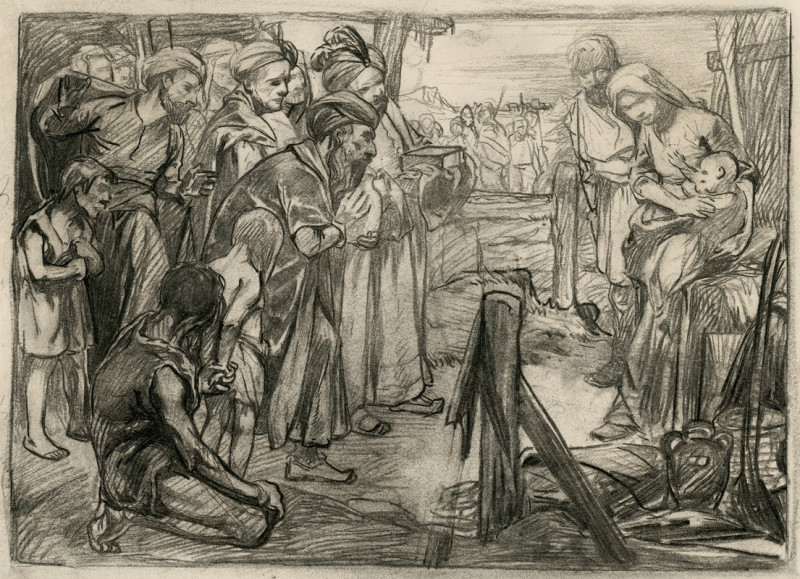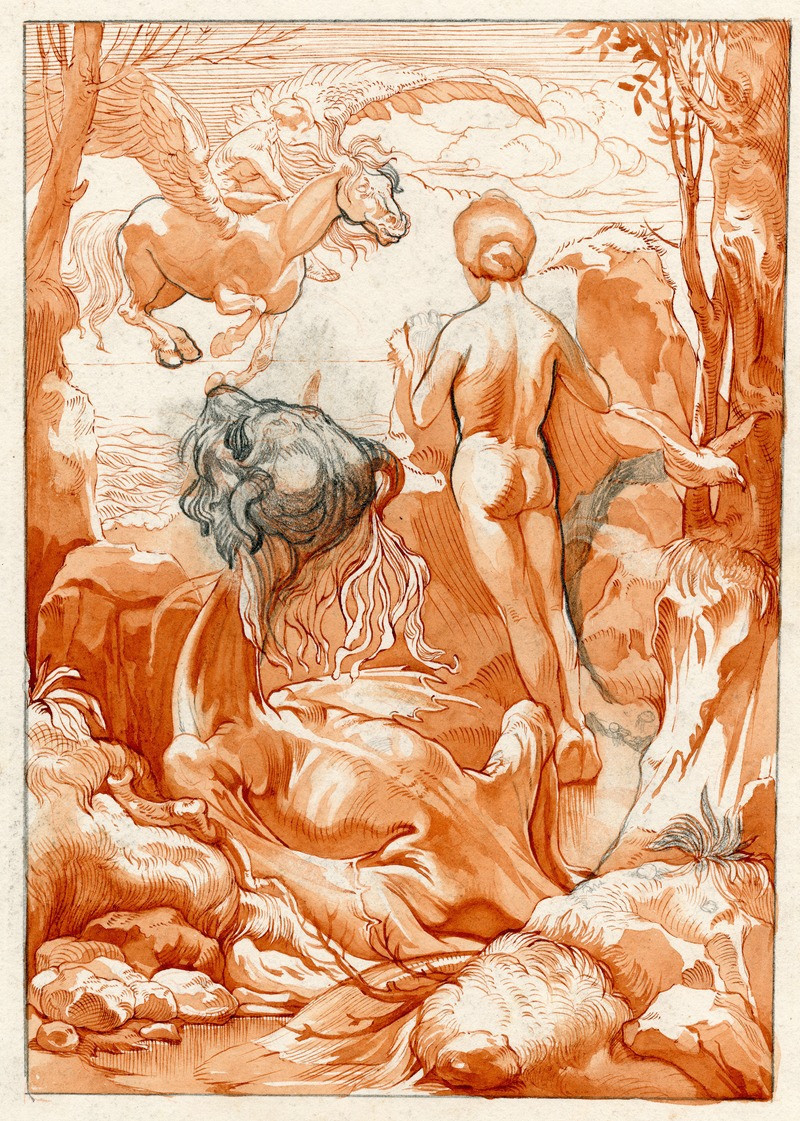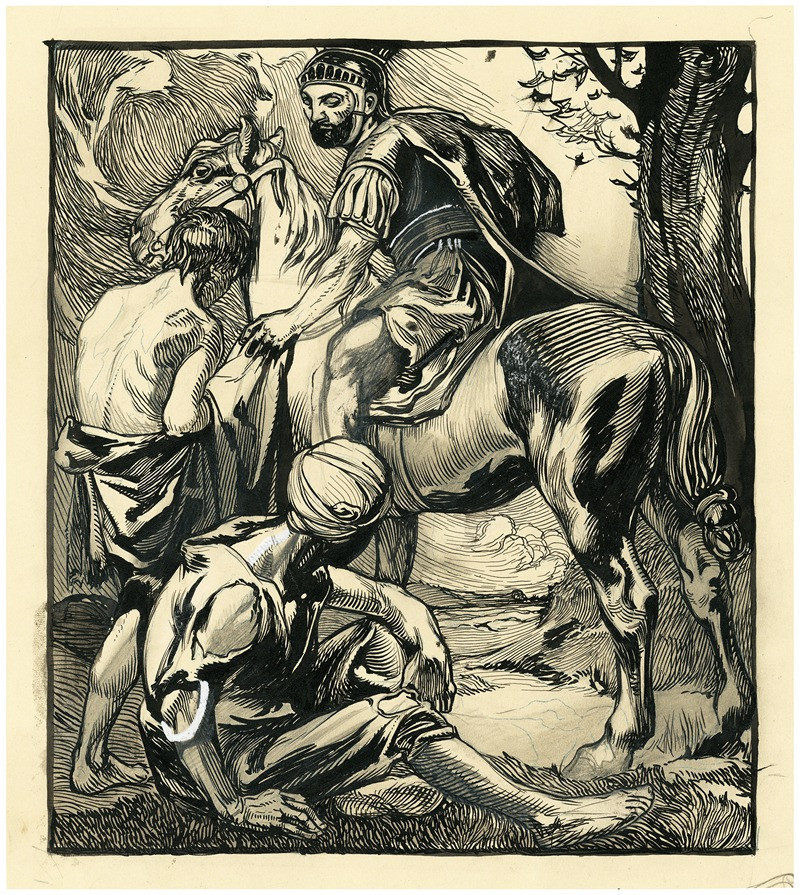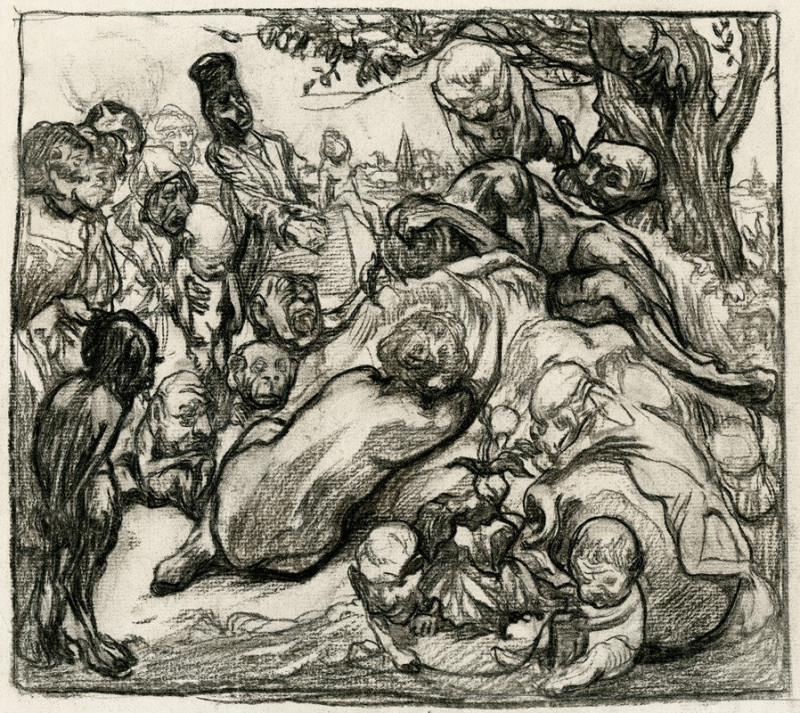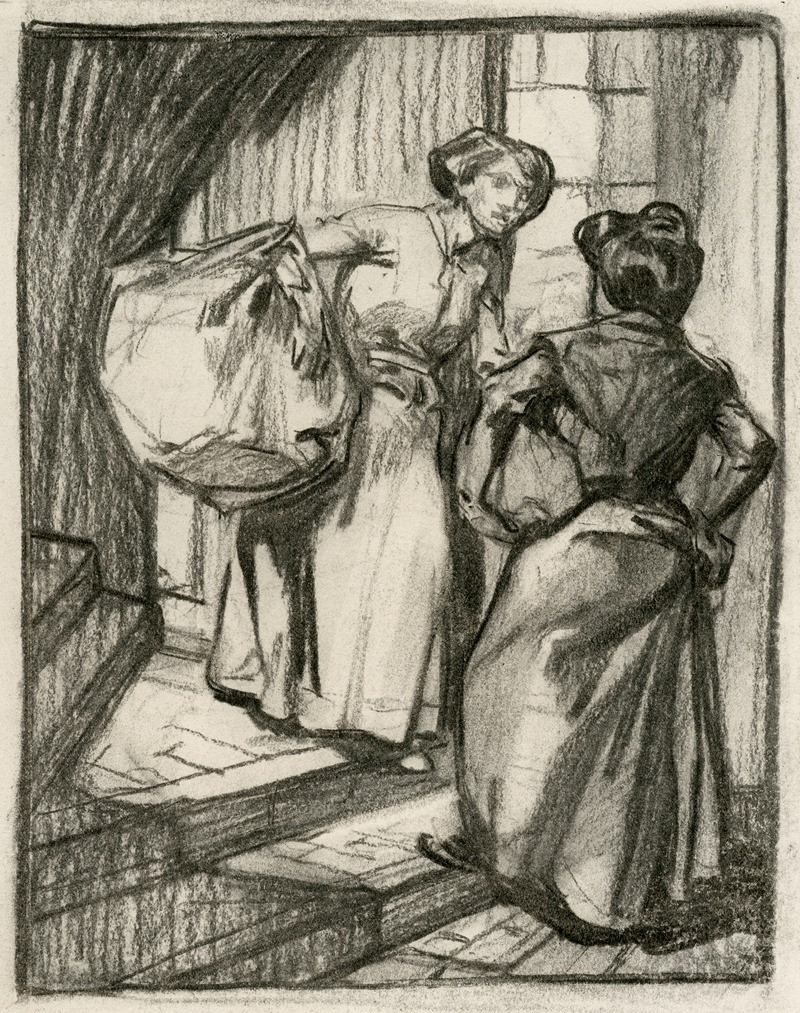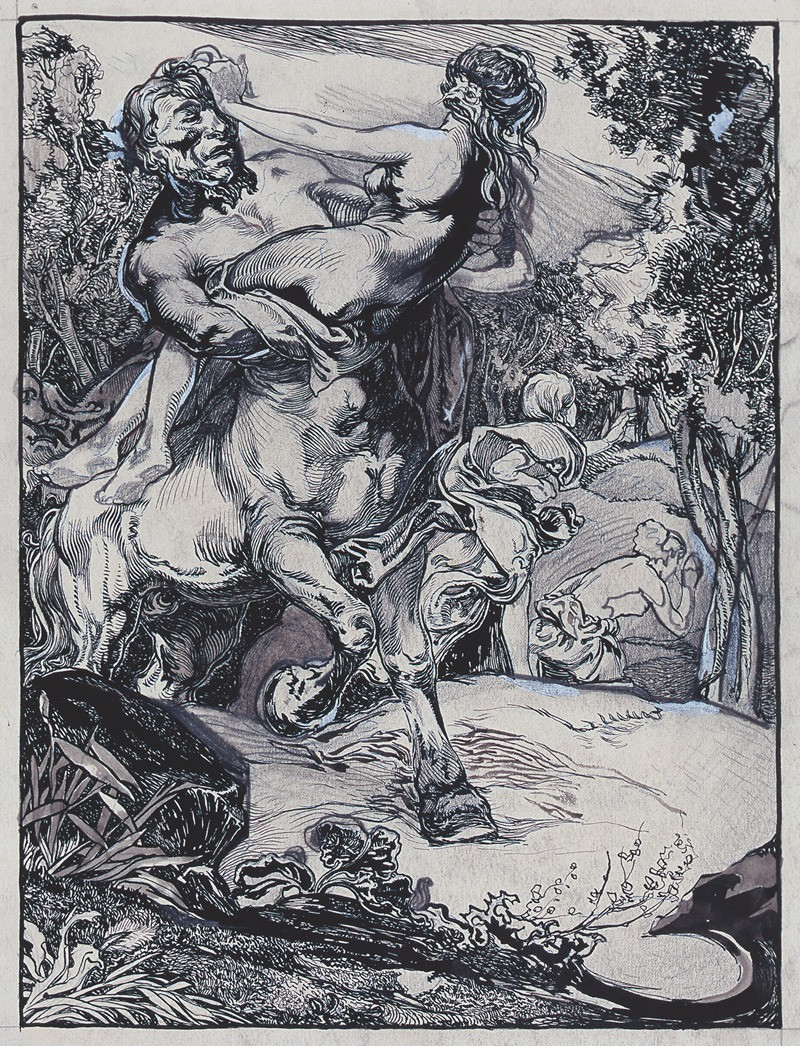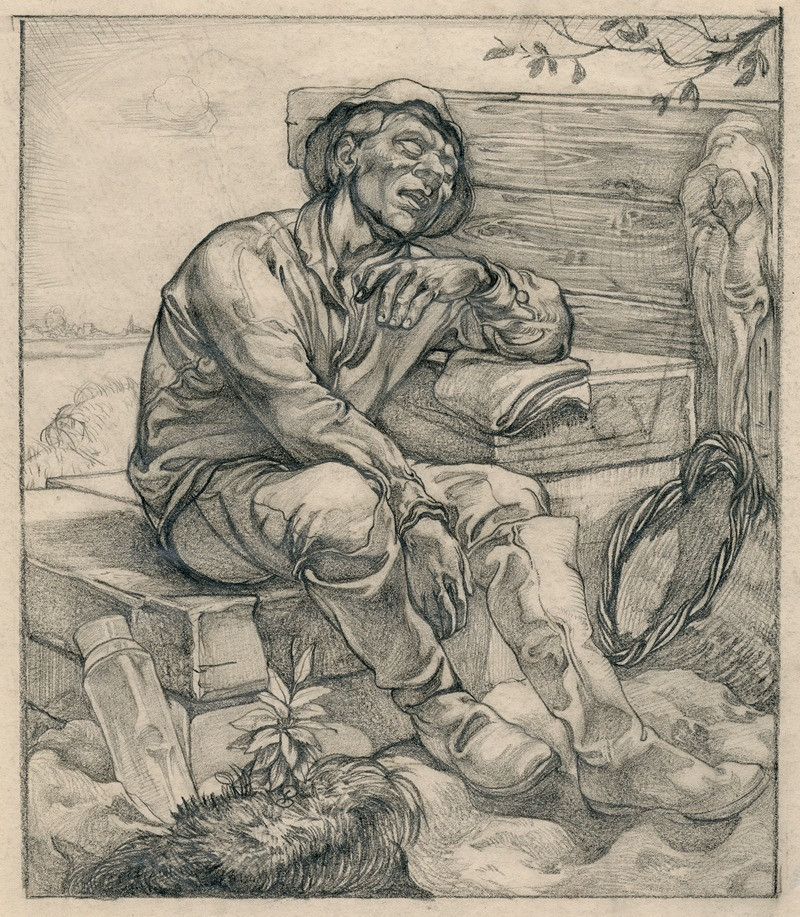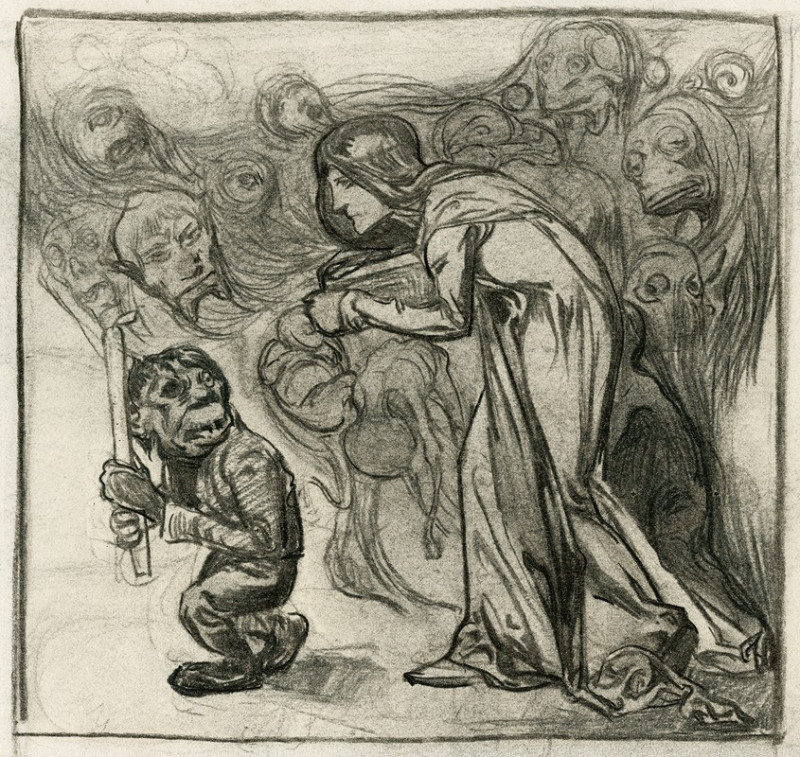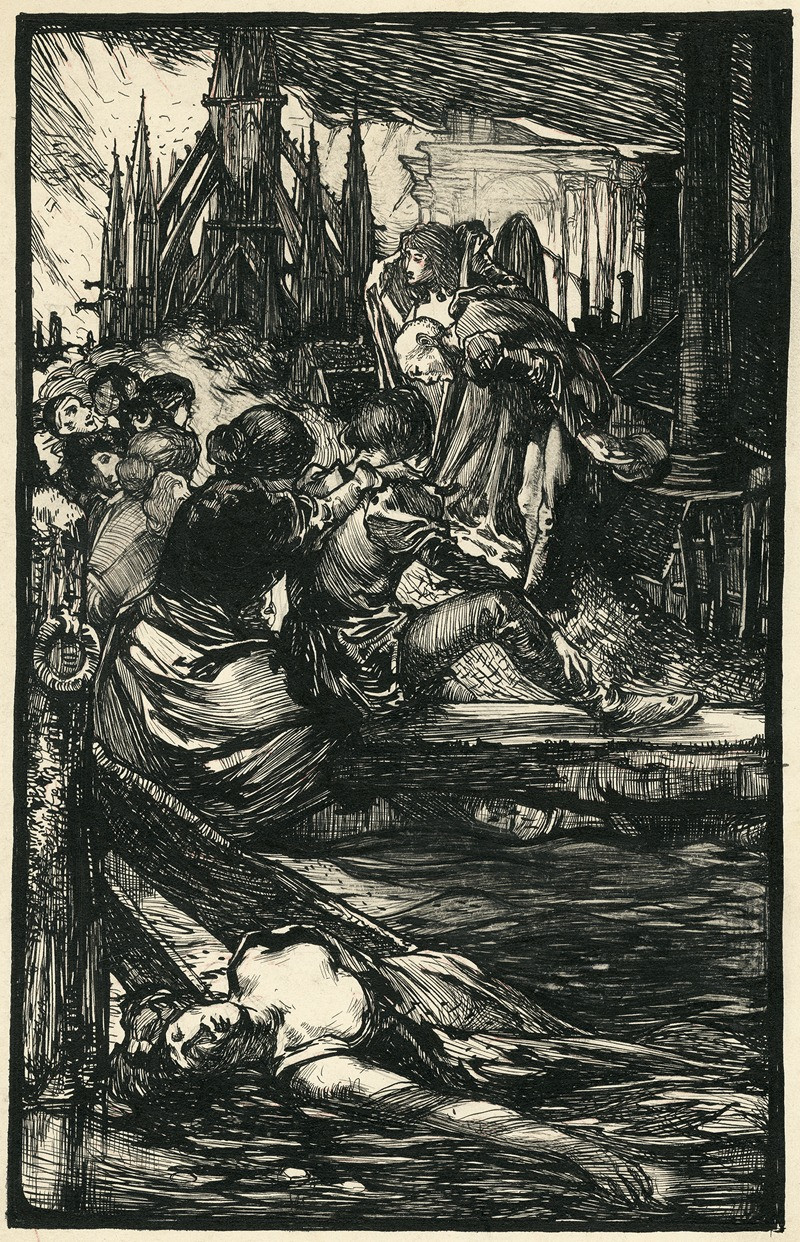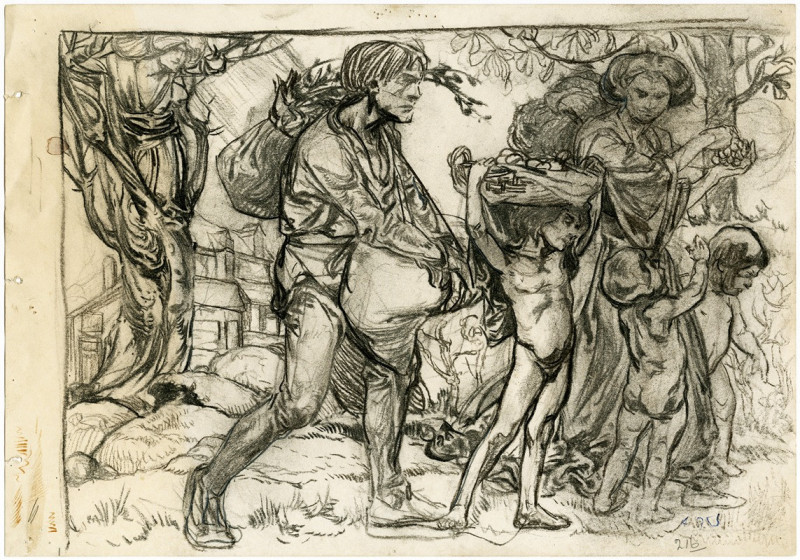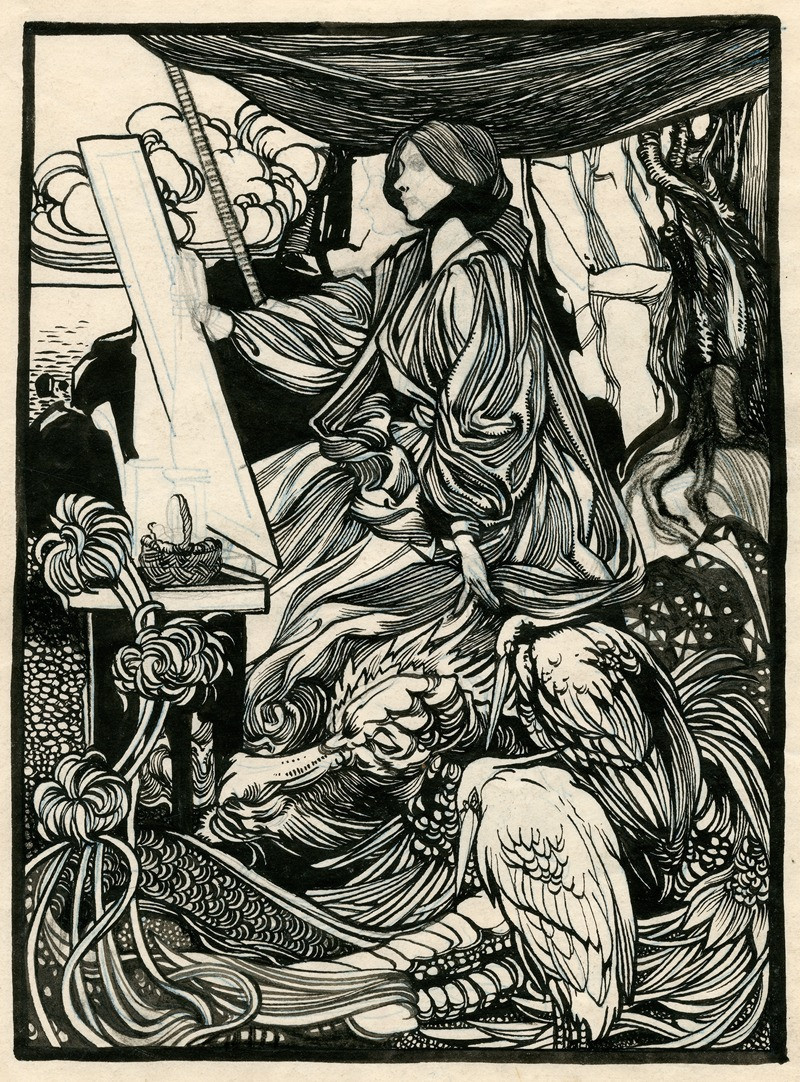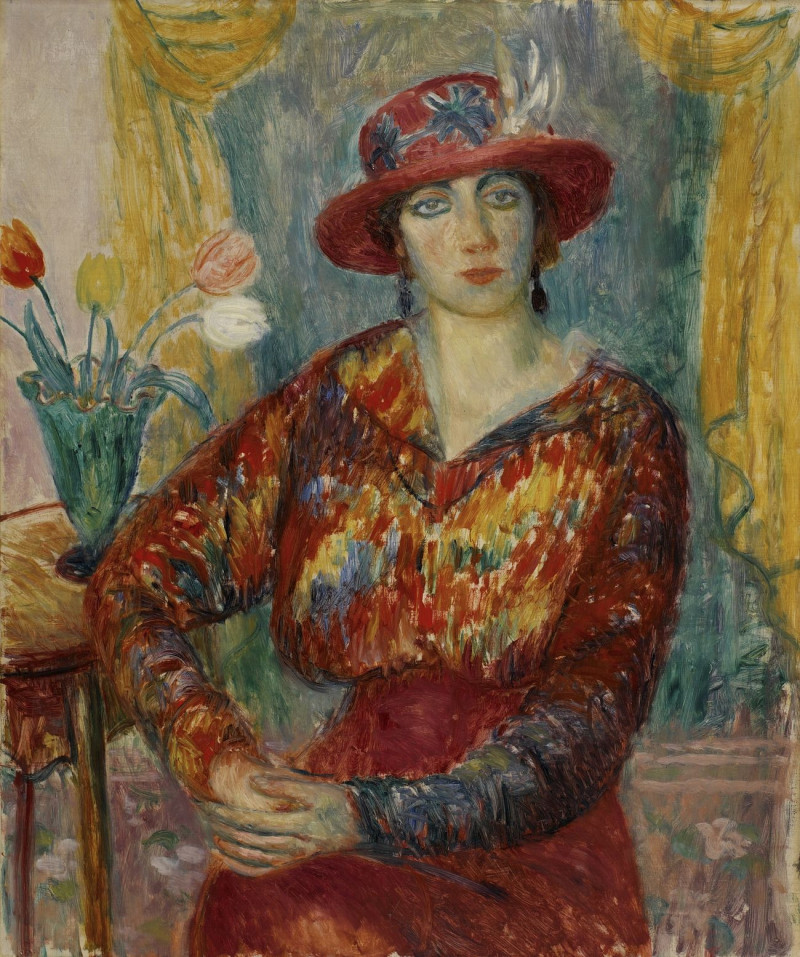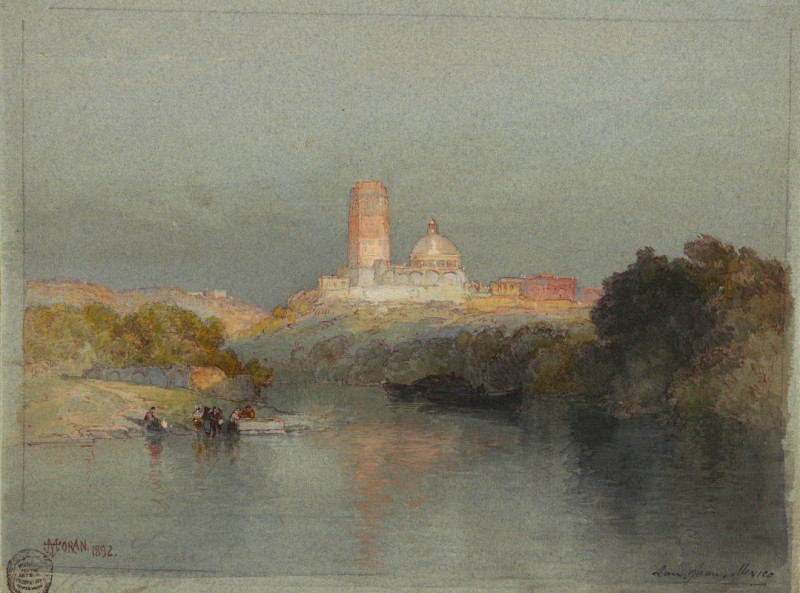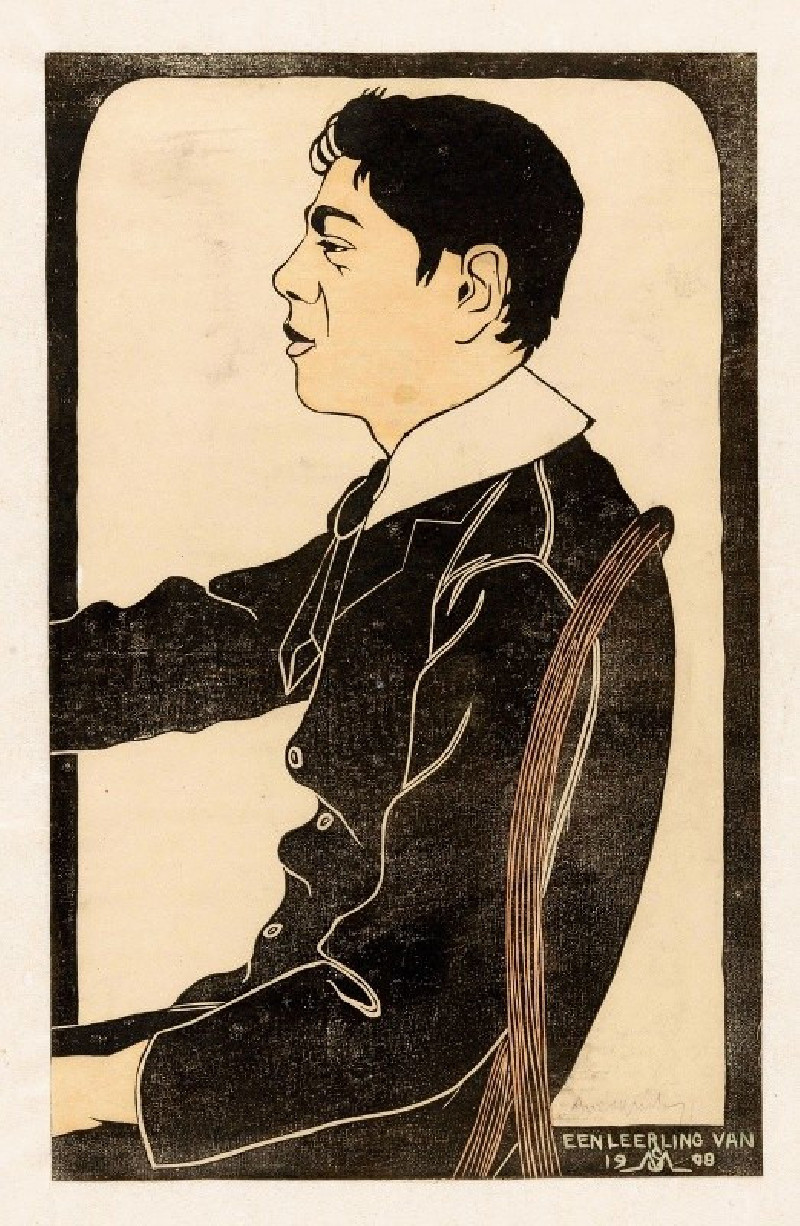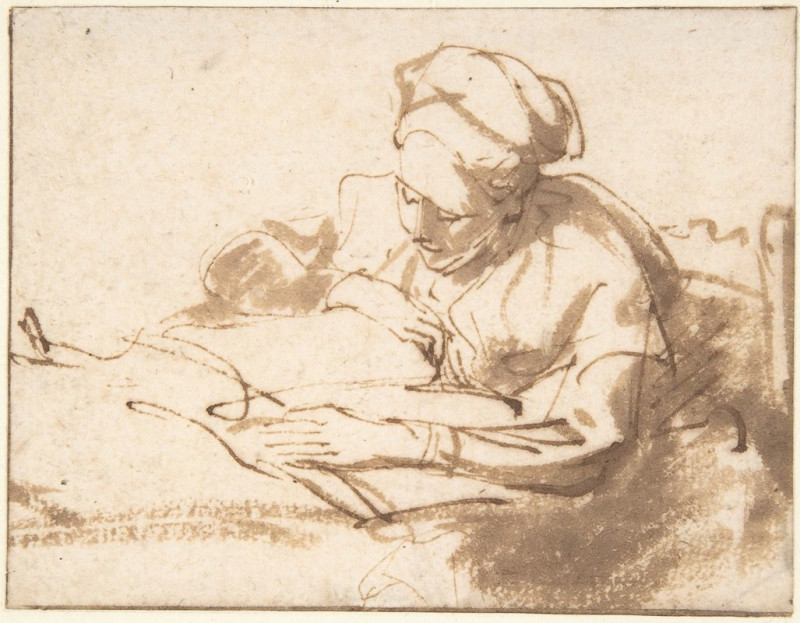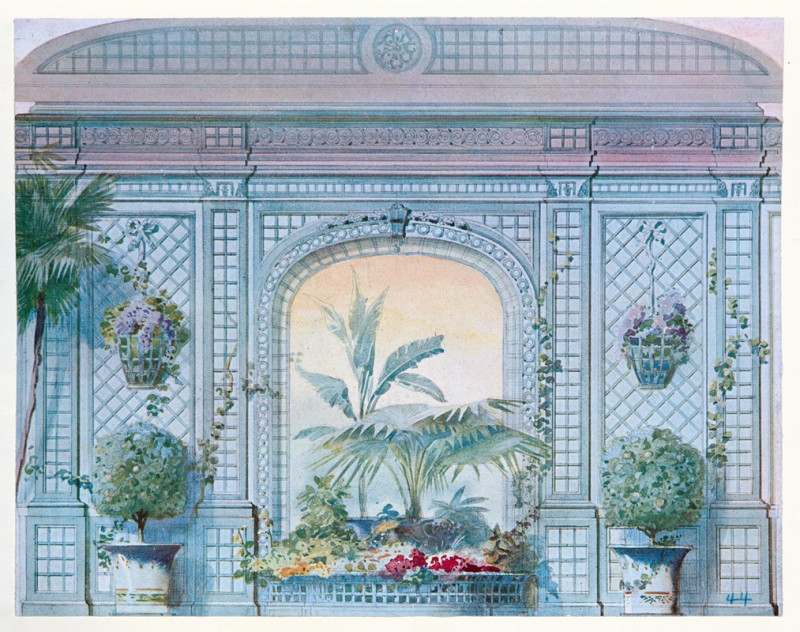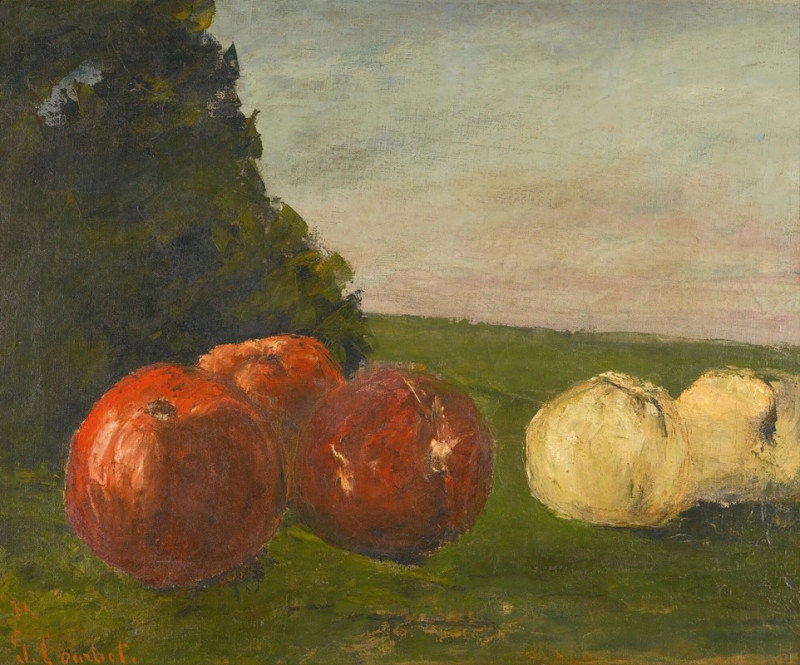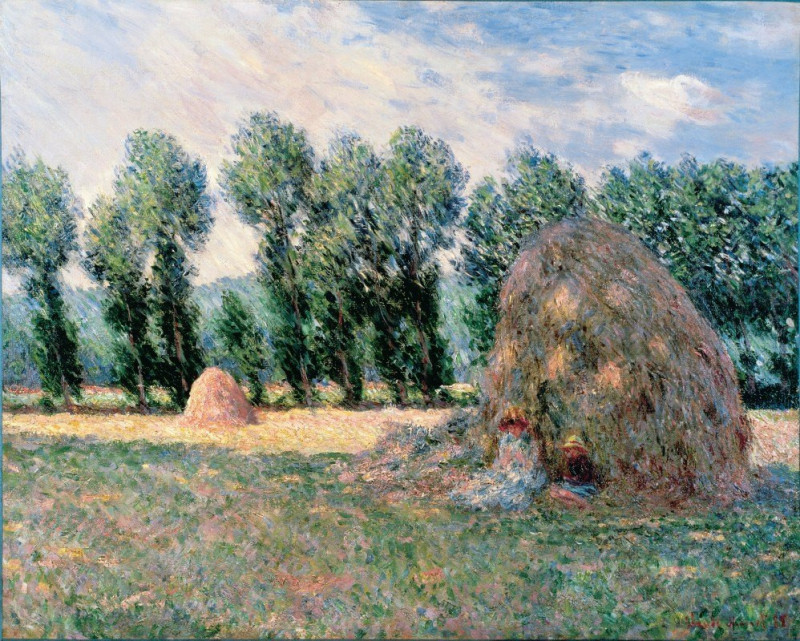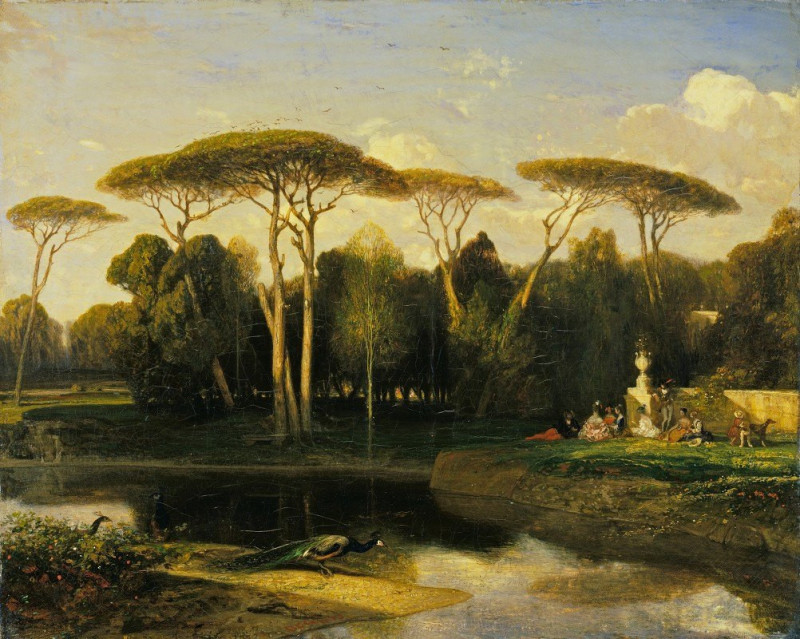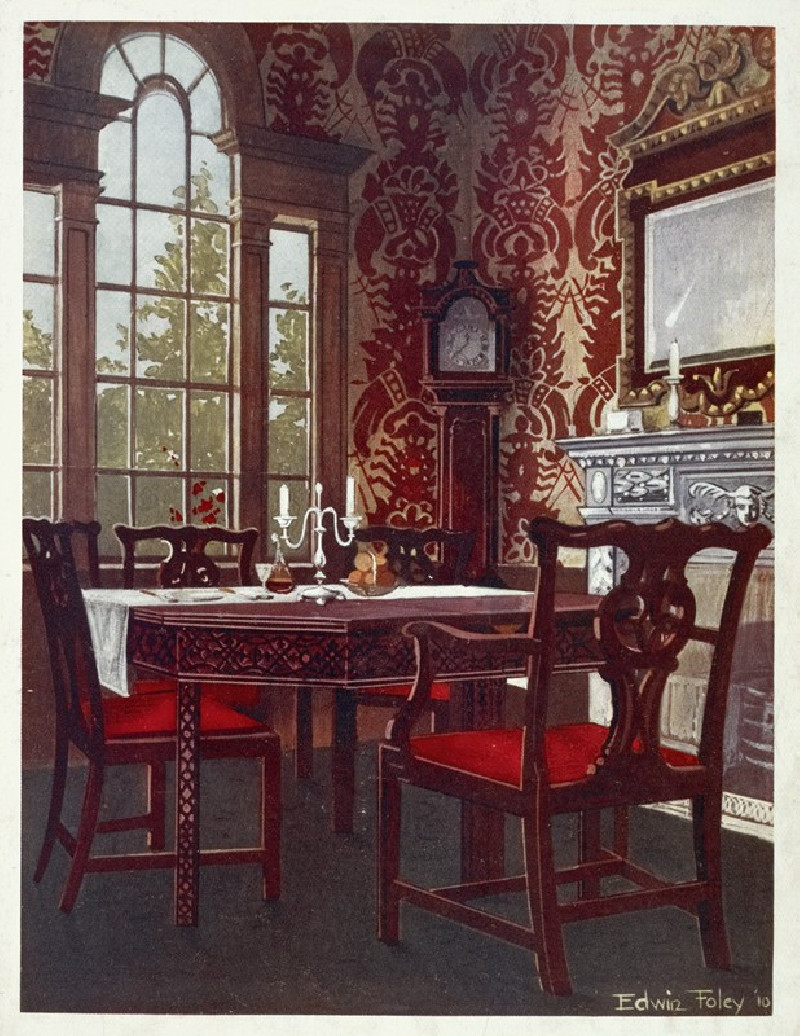Macbeth en de drie heksen
Technique: Giclée quality print
Recommended by our customers
More about this artwork
Johannes Josephus Aarts masterfully brings to life a pivotal moment from Shakespeare's tragic play in his expressive artwork, 'Macbeth en de drie heksen' (Macbeth and the Three Witches). This compelling piece, etched with dynamic lines and dramatic contrasts, captures the eerie encounter between Macbeth and the three witches, a scene steeped in prophecy and dark predictions.The composition of the artwork is centered on the intense interaction between the titular character, Macbeth, and the sinister trio who foretell his rise to power and eventual downfall. Macbeth, depicted in the foreground, is shown with a posture that suggests both intrigue and apprehension, highlighting his complex relationship with his fate. His figure, clad in medieval armor, draws the viewer’s eye, signaling his central role in the unfolding drama.The witches, rendered with ghostly and distorted features, seem to emerge from the shadows, enhancing the supernatural and foreboding atmosphere of the scene. Each witch, uniquely grotesque, leans toward Macbeth, their gestures both inviting and menacing. Their haunting presence is a visual representation of the inner turmoil and the moral corruption that plagues Macbeth throughout the play.This etching is not just a retelling but a reinterpretation, inviting viewers to feel the weight of the prophetic words and the chilling influence they have on Macbeth’s psyche. Aarts' use of shading and texture amplifies the mystical and ominous quality of the scene, making 'Macbeth en de drie heksen' a compelling depiction of one of literature's most famous encounters with the supernatural.
Delivery
Returns
Johannes Josephus Aarts was a Dutch painter, illustrator, lithographer, engraver, etcher, writer, academic teacher and director, lecturer, sculptor and book-cover designer.
Jan Aarts received training in the Royal Academy of Art, The Hague. He was active there until 1911, and in Amsterdam from 1911 to 1934. Initially, until around 1900, Aarts worked above all on engravings. Thereafter he began to also use other graphic methods. In his work, one found depictions of farmworkers, dyke workers and later also tramps, beggars and invalids. Between 1920 and 1930 he produced mostly visionary work with apocalyptic scenes.




